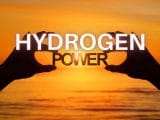
A hydrogen combustion future just “doesn’t seem feasible”, says Honda CEO
February 11, 2022Toshihiro Mibe said that he doesn’t see the potential in Toyota’s pursuit of the technology.
When Toshihiro Mibe, chief executive officer at Honda, recently spoke regarding proposals of cars powered by hydrogen combustion engines, he said the automaker looked into its potential about a decade ago but didn’t view it as feasible.
This opinion is a sharp opposite to rival automaker Toyota, which is pursuing the technology.
According to Mibe, while Toyota sees promise in hydrogen combustion technology, Honda doesn’t view it as feasible for cars. That said, the automaker’s opinion on that specific tech doesn’t mean that Honda is giving up on H2. H2 fuel cell vehicles remain a central component of the automaker’s zero-emissions strategy into he future.
Honda and Toyota are both globally recognized for their traditional gasoline-powered models but have also taken the spotlight for their efforts to power passenger vehicles. The majority of the auto industry, unlike these two Japanese companies, have focused on battery electric vehicles. Toyota in particular feels that hybrid models will remain competitive for another three decades, in addition to its H2 fuel cell electric vehicles (FCEVs), such as its Mirai. Honda has also moved forward with FCEVs with its Clarity Fuel Cell.

The Japanese government has supported Toyota with its FCEV and hydrogen combustion investments.
The Japanese government has supported automakers and other companies focusing on H2 in part because it is looking to that zero-emission fuel as a central part of its carbon neutrality goal for 2050. Though this tech has been broadly accepted for use in commercial vehicles and heavy machinery worldwide, battery electric vehicles (BEVs) are taking the top spot for consumer vehicles by a large margin.
This government support has given automakers in Japan an incentive to give H2 a second look. That said, Honda is keeping itself open to both technologies, keeping a close watch on consumer uptake. This is particularly true in the United States. Toyota has found itself placing its entire zero-emission spotlight on H2 options, working hard to slow BAV adoption. The company, nearly alone in investing into hydrogen combustion, has even gone so far to use propaganda in its home country to sway school children toward a future of hybrid tech.



 HFN News is your leading source for fresh hydrogen and renewable energy updates. Amid the fast-paced growth of hydrogen companies, we provide top-notch news and insights about this exciting sector. Our coverage spans from hydrogen cars to global sustainable initiatives, and we highlight the latest in green jobs and developing hydrogen hubs. We invite you to share your local hydrogen news and explore today’s renewable energy job listings on our site. Thanks for choosing HFN News as your trusted guide to the hydrogen and renewable energy world!
HFN News is your leading source for fresh hydrogen and renewable energy updates. Amid the fast-paced growth of hydrogen companies, we provide top-notch news and insights about this exciting sector. Our coverage spans from hydrogen cars to global sustainable initiatives, and we highlight the latest in green jobs and developing hydrogen hubs. We invite you to share your local hydrogen news and explore today’s renewable energy job listings on our site. Thanks for choosing HFN News as your trusted guide to the hydrogen and renewable energy world!